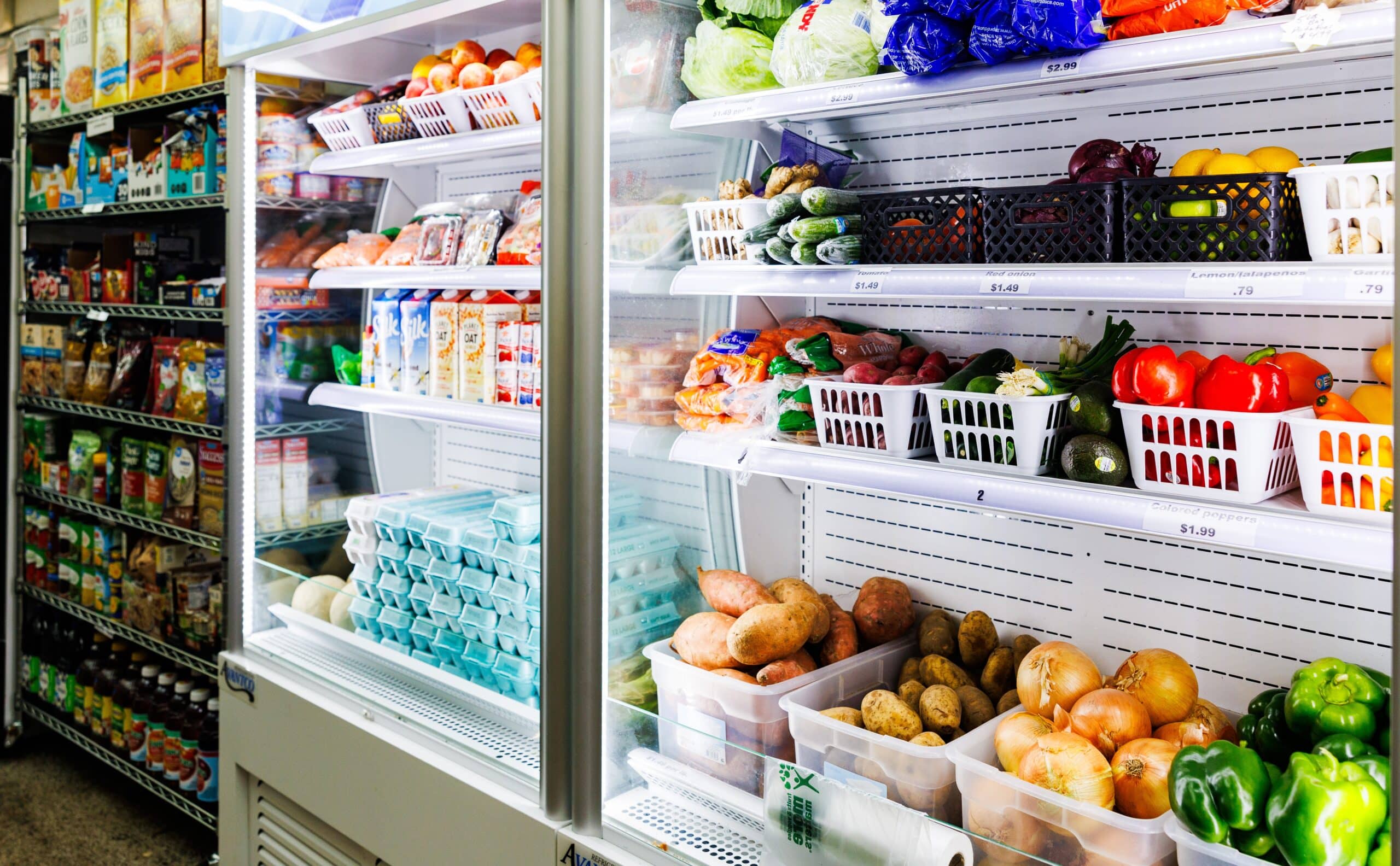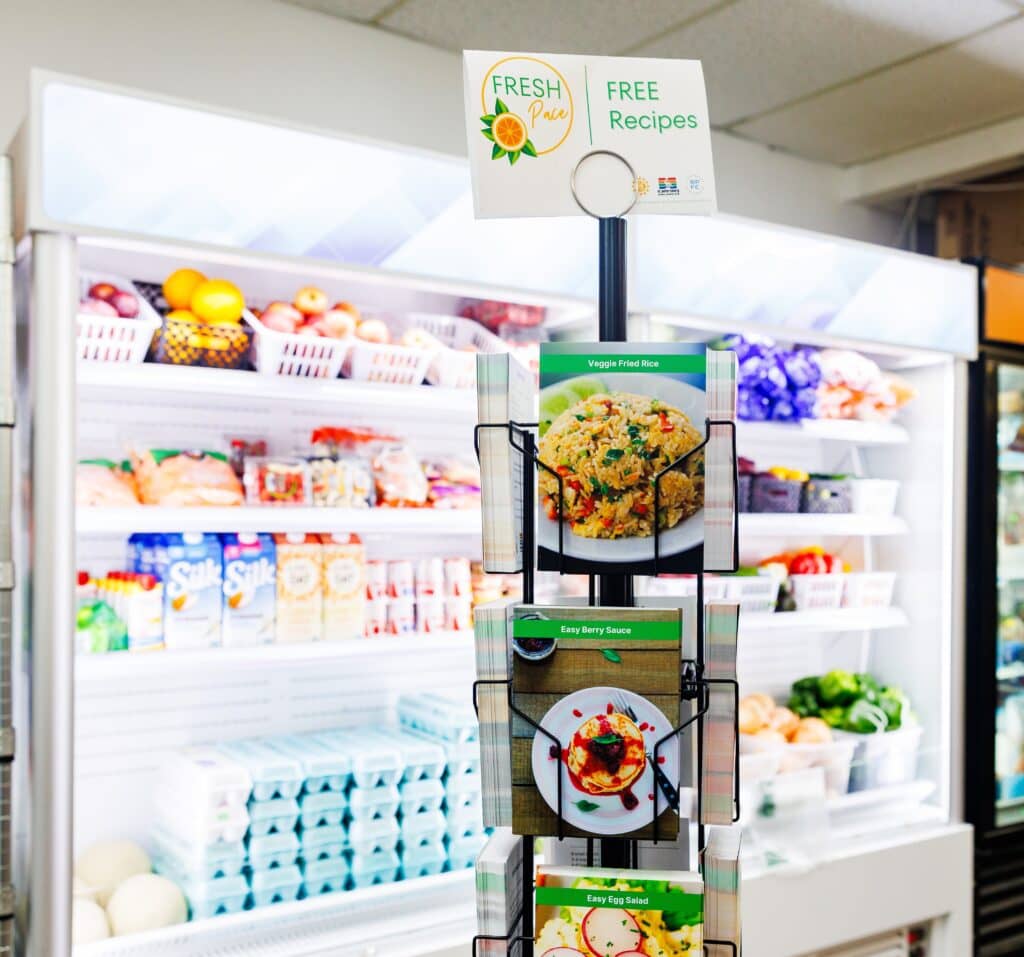Impact
New neighborhood store program tackles food deserts

The City of St. Petersburg is partnering with St. Pete Free Clinic on a new program to bring healthier grocery options to areas with limited access to nutritious foods.
The FRESH Pace Healthy Neighborhood Store Program kicked off this week at Rajax Food Mart and Meat Mart, 2327 Dr. Martin L. King Jr. Street S. St. Pete Free Clinic will collaborate with local stores to establish infrastructure, marketing plans and sustainable business models so corner stores can stock nutritious food like fresh fruits and vegetables, low-fat proteins, whole grain items and low-fat dairy products or dairy alternatives.
The City is underwriting the program using funds from the American Rescue Plan Act (ARPA); $45 million in ARPA State and Local Fiscal Recovery Funds has been budgeted to continue the response to the Covid-19 pandemic and to help drive an equitable recovery for residents most impacted by the virus. Of the $45 million, $1.179 million has been allocated for Food Security.
“The FRESH Pace Healthy Neighborhood Store Program is a shining example of how we are putting our ARPA dollars to work and addressing my administration’s Neighborhood Health and Safety Pillar for Progress,” said Mayor Ken Welch in a prepared statement. “Through our partnership with St. Pete Free Clinic and Rajax Food Mart and Meat Mart, FRESH Pace will expand grocery store options in South St. Pete while improving access to healthy foods for families in need.”
The first FRESH Pace Healthy Neighborhood Store is in Councilmember Deborah Figgs-Sanders’ district. She says integrating these stores and FRESH program into the community is crucial for the success of the program.
“We’re using neighborhood stores to actually serve as the resource for the residents, especially those within walking distance,” said Figgs-Sanders. “[Rajax] is the perfect location because, if you look for miles around, there is not another grocery store. Especially considering transportation, imagine how long it would take to get a bus to go and get something easily accessible to make healthy dinners with?”
Figgs-Sanders also touted the recipe cards that are on display alongside the fresh produce, noting that meal preparation is key in encouraging families to choose healthier food options, like fresh fruits and vegetables, which often have a shorter shelf life.
“You can take those vegetables and make them last for several days because now you’ve prepared healthy meals. They’ve put a lot of thought into it,” she said.

Rajax Food Mart and Meat Mart is the first of six planned FRESH Pace Healthy Neighborhood Store locations throughout St. Pete. Photo provided.
As part of the program rollout, St. Pete Free Clinic also plans to subsidize food costs for the stores as they build up their stock of healthy foods and help business owners navigate the process of accepting EBT and WIC if they do not already do so. Although St. Pete Free Clinic distributes free food at more than 115 sites throughout Pinellas County through its food bank and food pantry programs, CEO Jennifer Yeagley says these services can only stretch so far and are just one component of a sustainable model for access to nutritious food.
“FRESH Pace empowers small businesses, creates affordability of healthy food for residents in neighborhoods without grocery stores, and encourages collaboration and partnership across sectors,” Yeagley said. “This initiative addresses the inequity of food and nutrition insecurity in low-income areas in a way that leverages existing neighborhood strengths, relationships, and infrastructure and promotes the sustainability of a thriving business sector that supports the health of all residents.”
Food deserts, where access to affordable and healthy foods is limited, have been widely blamed as a major cause of hunger and health challenges throughout the country. The United States Department of Agriculture estimates about 53.6 million people, or 17% of the population in the U.S., live in areas considered low-income and low-access, meaning the nearest supermarket is more than a half mile or 10 miles away. The City of St. Pete has identified eight census tracts where a significant number of residents are more than one mile from a supercenter, supermarket or large grocery store.
“Residents living within these areas often shop at small food retailers that often do not stock healthy foods, or sell healthier options at inaccessible price points,” Yeagley said. “At SPFC, we believe access to nutritious food is a catalyst for health equity. The FRESH Pace program is positioned to serve another component of a sustainable food system, especially in areas that lack affordable grocery stores.”
The program will certify a total of six FRESH Pace Healthy Neighborhood Stores throughout the City of St. Pete. Yaegley says the next store to begin offering access to healthy foods will be Lakeview Market, 1940 22nd Avenue South, with potential future opportunities to expand the program beyond the initial six locations.






james gillespie
October 29, 2023at5:25 am
A POSIIVE PROGRAM WHICH THE AFFECTED COMMUNITY MUST SUPPORT FROM THE OUTSET. EBT AND WIC MUST BE REDUCED BY CREATING JOBS FOR THE COMMUNITY IN THE LONG RUN. THAT INCLUDES THE BENEFITS OF EDUCATION IN MANY FORMS. DIGNITY AND A CHANGE IN THE STANDARD OF LIVING ARE COMPONENTS AS WELL AS AVAILABILITY OF BETTER FOOD CHOICES.
Danny E White
October 28, 2023at3:59 pm
This is a good idea. However, the Rajax Food Mart has historically stocked fresh vegetables and dairy products. What exactly makes this FERSH Pace Healthy Neighborhood Stores project significantly different in the quest to address the so-called food desert issue in the CRA? Is it that fresh produce and dairy will be more consistently available? And if so, was the history of stocking and selling such fresh products understood before launching the initiative? Just because the products are available does not mean that citizens will embrace healthier eating. Availability and will are two different things. Is there an education component included in the initiative?